Key Takeaways
1. Prediction requires balancing signal and noise
The signal is the truth. The noise is what distracts us from the truth.
Signal vs. Noise. Accurate prediction involves distinguishing meaningful patterns (signal) from random fluctuations (noise) in data. This is challenging because:
- Our brains are wired to see patterns, even where none exist
- More information doesn't necessarily lead to better predictions
- Cognitive biases can lead us to focus on the wrong information
Successful forecasters develop techniques to separate signal from noise:
- Using statistical methods to quantify uncertainty
- Seeking out diverse sources of information
- Constantly testing and refining their predictions against real-world outcomes
2. Overconfidence leads to poor forecasts
We tend to overestimate the amount of control we have over our fate, but it can be beneficial to take the opposite approach.
Perils of overconfidence. Overconfidence is a major obstacle to accurate prediction, affecting experts and laypeople alike:
- We tend to underestimate uncertainty and overstate our ability to predict
- Experts often make worse predictions than simple statistical models
- Overconfidence can lead to disastrous consequences in fields like finance and politics
To combat overconfidence:
- Acknowledge the limits of our knowledge and ability to predict
- Use probabilistic thinking instead of making absolute predictions
- Seek out information that challenges our existing beliefs
3. Bayesian thinking improves predictions
Bayes's theorem is nominally a mathematical formula. But it is really much more than that. It implies that we must think differently about our ideas—and how to test them.
Bayesian reasoning. Bayesian thinking provides a framework for updating beliefs based on new evidence:
- Start with a prior probability based on existing knowledge
- Update this probability as new information becomes available
- Constantly refine predictions as more data is gathered
Key principles of Bayesian thinking:
- Embrace uncertainty and think probabilistically
- Be willing to change your mind when presented with new evidence
- Recognize that all knowledge is provisional and subject to revision
4. Domain expertise enhances forecasting ability
Danger lurks, in the economy and elsewhere, when we discourage forecasters from making a full and explicit account of the risks inherent in the world around us.
Expertise matters. While experts can be prone to overconfidence, deep domain knowledge is crucial for accurate prediction:
- Experts understand the nuances and complexities of their field
- They can identify relevant information and discard noise more effectively
- Domain knowledge allows for better interpretation of data and trends
However, expertise must be combined with:
- Openness to new information and perspectives
- Willingness to admit mistakes and update beliefs
- Understanding of cognitive biases and how to mitigate them
5. Big Data amplifies both signal and noise
In the last twenty years, with the exponential growth in the availability of information, genomics, and other technologies, we can measure millions and millions of potentially interesting variables.
Double-edged sword. The Big Data revolution has profound implications for prediction:
- Vastly more information is available for analysis
- Powerful computing tools allow for complex modeling and analysis
- But more data also means more potential for spurious correlations and false patterns
To effectively use Big Data for prediction:
- Focus on asking the right questions, not just analyzing all available data
- Use rigorous statistical methods to separate signal from noise
- Combine data analysis with domain expertise and critical thinking
6. Successful predictions require constant refinement
The best forecasters, rather, are making a series of incremental improvements and constantly testing themselves.
Iterative improvement. Accurate prediction is not a one-time event, but an ongoing process:
- Successful forecasters constantly update their models and assumptions
- They seek out feedback and learn from their mistakes
- Predictions are refined based on new information and changing conditions
Key practices for ongoing improvement:
- Keep detailed records of predictions and outcomes
- Regularly review and analyze past forecasts
- Be willing to abandon or modify models that no longer work
7. Prediction markets aggregate knowledge effectively
Prediction markets are systems where you can place bets on a particular economic or policy outcome, like whether Israel will go to war with Iran, or how much global temperatures will rise because of climate change.
Wisdom of crowds. Prediction markets harness collective intelligence for forecasting:
- Participants have a financial incentive to make accurate predictions
- Markets aggregate diverse knowledge and perspectives
- Prices reflect the collective judgment of many individuals
Advantages of prediction markets:
- Often outperform individual experts
- Provide real-time updates as new information becomes available
- Can be applied to a wide range of topics, from politics to economics
8. Economic forecasting faces unique challenges
Economics is a much softer science. Although economists have a reasonably sound understanding of the basic systems that govern the economy, the cause and effect are all blurred together, especially during bubbles and panics when the system is flushed with feedback loops contingent on human behavior.
Complex systems. Economic forecasting is particularly difficult due to:
- The complexity of economic systems with many interacting variables
- Human behavior and psychology playing a significant role
- Feedback loops and nonlinear relationships between factors
Challenges in economic forecasting:
- Difficulty in isolating cause and effect
- Limited ability to conduct controlled experiments
- Frequent revisions to economic data
Best practices for economic forecasting:
- Use multiple models and approaches
- Incorporate qualitative factors and expert judgment
- Regularly update forecasts as new information becomes available
9. Weather forecasting exemplifies prediction progress
Weather forecasting is one of the real success stories in this book. Forecasts of everything from hurricane trajectories to daytime high temperatures have gotten much better than they were even ten or twenty years ago, thanks to a combination of improved computer power, better data-collection methods, and old-fashioned hard work.
Steady improvement. Weather forecasting demonstrates how prediction can improve over time:
- Advances in computer modeling and data collection
- Better understanding of atmospheric physics
- Integration of human expertise with computer models
Key factors in weather forecasting progress:
- Massive increases in computing power
- Improved satellite and radar technology
- Development of ensemble forecasting techniques
Lessons for other fields:
- Combine technological advances with human judgment
- Invest in data collection and model improvement
- Embrace probabilistic forecasting
10. Earthquake prediction remains elusive
Hough's conclusion was damning. The experts in his survey—regardless of their occupation, experience, or subfield—had done barely any better than random chance, and they had done worse than even rudimentary statistical methods at predicting future political events.
Limits of prediction. Despite advances in seismology, accurate earthquake prediction remains challenging:
- Earthquakes result from complex, nonlinear processes in the Earth's crust
- Limited ability to directly observe conditions deep underground
- Difficulty in distinguishing genuine precursors from random fluctuations
Challenges in earthquake prediction:
- False alarms can be costly and erode public trust
- Long time scales between major events make testing difficult
- Chaotic nature of earthquake systems limits predictability
Current approaches focus on:
- Probabilistic forecasting of earthquake risk
- Improving early warning systems
- Enhancing building codes and infrastructure resilience
11. Political forecasting benefits from aggregation
There is strong empirical and theoretical evidence that there is a benefit in aggregating different forecasts. Across a number of disciplines, from macroeconomic forecasting to political polling, simply taking an average of everyone's forecast rather than relying on just one has been found to reduce forecast error, often by about 15 or 20 percent.
Collective wisdom. Aggregating multiple forecasts often improves accuracy in political prediction:
- Diverse perspectives help cancel out individual biases
- Combining different methods captures more information
- Aggregation reduces the impact of outliers or extreme predictions
Effective approaches to political forecasting:
- Poll aggregation and weighted averages
- Prediction markets for political outcomes
- Ensemble models combining multiple forecasting techniques
Limitations to consider:
- Potential for herding behavior or groupthink
- Need for diversity in forecasting methods and sources
- Importance of identifying and weighting high-quality forecasts
12. Financial markets challenge efficient prediction
Economics 101 teaches that trading is rational only when it makes both parties better off. A baseball team with two good shortstops but no pitching trades one of them to a team with plenty of good arms but a shortstop who's batting .190. Or an investor who is getting ready to retire cashes out her stocks and trades them to another investor who is just getting his feet wet in the market.
Market inefficiencies. Financial markets present unique challenges for prediction:
- Efficient Market Hypothesis suggests markets are unpredictable
- Yet bubbles and crashes demonstrate market inefficiencies
- Short-term focus and herding behavior can lead to irrational outcomes
Factors complicating financial prediction:
- Reflexivity: predictions can influence market behavior
- Asymmetric information and insider trading
- Psychological biases affecting investor decision-making
Approaches to financial forecasting:
- Fundamental analysis of economic factors
- Technical analysis of price patterns and trends
- Behavioral finance insights into market psychology
Recognizing limits:
- Perfect prediction is impossible in complex, dynamic markets
- Focus on risk management and probabilistic thinking
- Understand the role of luck and randomness in short-term outcomes
Last updated:
FAQ
What's The Signal and the Noise about?
- Focus on Prediction: The book explores the art and science of making predictions across various fields, such as economics, politics, and sports. It examines why many forecasts fail while some succeed.
- Signal vs. Noise: Nate Silver introduces the concept of distinguishing between "signal" (truth) and "noise" (distractions or false information) in data, which is crucial for accurate forecasting.
- Human Error and Technology: The interplay between human judgment and technological advancements in prediction is discussed, highlighting how biases and errors can undermine technological benefits.
Why should I read The Signal and the Noise?
- Understanding Predictions: The book provides insights into the mechanisms behind successful predictions and common pitfalls, encouraging critical thinking about data interpretation.
- Real-World Examples: Silver uses compelling case studies, such as the financial crisis and weather forecasting, to make concepts relatable and applicable to various fields.
- Improving Decision-Making: Practical advice is offered on making better predictions and decisions by recognizing biases and understanding uncertainty, beneficial in personal and professional contexts.
What are the key takeaways of The Signal and the Noise?
- Embrace Uncertainty: Acknowledge uncertainty in predictions to improve decision-making. Silver argues that understanding and communicating uncertainty is crucial.
- Use Bayesian Thinking: Silver advocates for Bayesian statistical methods, which involve updating predictions as new information becomes available, allowing for more flexible forecasting.
- Beware of Overconfidence: The book warns against overconfidence in predictions, emphasizing humility and adaptability as essential for successful forecasting.
What are the best quotes from The Signal and the Noise and what do they mean?
- “The signal is the truth. The noise is what distracts us from the truth.”: This quote highlights the challenge of finding accurate information amidst overwhelming data, reminding us to focus on what truly matters.
- “We love to predict things—and we aren’t very good at it.”: Reflects Silver's critique of human tendencies to make predictions without sufficient evidence, underscoring the need for a thoughtful approach.
- “When the facts change, I change my mind. What do you do, sir?”: Emphasizes adaptability in forecasting, encouraging openness to new information and adjusting predictions accordingly.
How does Nate Silver define "signal" and "noise" in The Signal and the Noise?
- Signal Defined: Silver defines "signal" as meaningful information that can lead to accurate predictions, representing the underlying truth forecasters seek.
- Noise Explained: "Noise" refers to irrelevant or misleading information that can obscure the signal, including distractions, biases, and errors.
- Importance of Distinction: Differentiating between signal and noise is crucial for effective forecasting, enhancing prediction accuracy across various fields.
What is Bayesian thinking, and how is it applied in The Signal and the Noise?
- Bayesian Definition: Bayesian thinking is a statistical approach that involves updating beliefs or predictions based on new evidence, contrasting with fixed-assumption methods.
- Application in Forecasting: Silver illustrates how Bayesian methods improve predictions by allowing model adjustments as new data becomes available, essential in dynamic environments.
- Real-World Examples: The book provides examples of successful Bayesian applications in sports analytics and political forecasting, achieving more accurate predictions.
How does The Signal and the Noise address the failures of prediction in economics?
- Historical Context: Silver examines economic forecasting failures, such as the 2008 financial crisis, arguing that economists often overestimate their predictive abilities.
- Bias and Overconfidence: Discusses how biases and overconfidence lead to inaccurate forecasts, emphasizing humility and recognition of uncertainty in economic predictions.
- Call for Improvement: Advocates for a rigorous approach to economic forecasting, incorporating Bayesian methods and acknowledging model limitations for better outcomes.
What are the implications of overfitting in forecasting, as discussed in The Signal and the Noise?
- Definition of Overfitting: Overfitting occurs when a model is too complex, capturing noise rather than the signal, leading to poor predictive performance.
- Consequences for Predictions: Overfitting results in models that appear accurate in testing but fail with new data, problematic in fields like economics and earthquake forecasting.
- Avoiding Overfitting: Strategies include simplifying models and focusing on relevant variables, improving prediction reliability.
How does The Signal and the Noise illustrate the importance of communication in forecasting?
- Clear Communication of Uncertainty: Silver emphasizes effective communication of uncertainty to help decision-makers understand risks and prepare accordingly.
- Case Studies: Examples like the National Weather Service's hurricane forecasts show the impact of clear communication, saving lives and mitigating damage.
- Lessons for Forecasters: Forecasters should strive for honesty and clarity, building trust with audiences and improving forecast effectiveness.
What role does uncertainty play in forecasting according to The Signal and the Noise?
- Inherent Uncertainty: Silver asserts that uncertainty is intrinsic to predictions, encouraging readers to embrace it for accurate forecasting.
- Quantifying Uncertainty: Methods like confidence intervals and probabilistic models help quantify uncertainty, aiding forecasters in understanding possible outcomes.
- Decision-Making: Understanding uncertainty leads to informed decisions, promoting cautious and flexible approaches to predictions.
How does Nate Silver use examples from sports in The Signal and the Noise?
- Baseball Analytics: Silver uses his background in baseball analytics to show the importance of data in predictions, transforming team evaluations and strategies.
- Predicting Game Outcomes: Explores predictive models in sports, emphasizing luck versus skill, leading to better betting strategies and management.
- Broader Implications: Sports serve as a case study for applying prediction principles to other fields, making complex concepts relatable.
What is the significance of the title The Signal and the Noise?
- Distinction Between Signal and Noise: The title encapsulates the book's theme of distinguishing between meaningful signals and irrelevant noise in forecasting.
- Implications for Decision-Making: Understanding this distinction leads to better decision-making in fields like economics and politics, improving forecasting accuracy.
- Broader Context: Reflects the challenge of interpreting information in a data-driven world, emphasizing the need to filter out noise.
Review Summary
The Signal and the Noise receives mixed reviews, with praise for its insights on prediction, statistics, and Bayesian thinking. Readers appreciate Silver's clear explanations and real-world examples across various fields. However, some find the book too long, repetitive, or American-centric. The baseball and poker chapters draw polarized reactions. Critics note occasional writing flaws and question some of Silver's arguments. Overall, most reviewers recommend the book for those interested in forecasting, data analysis, and understanding uncertainty in predictions.
Similar Books
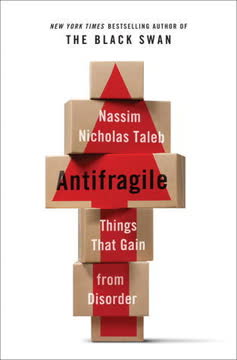

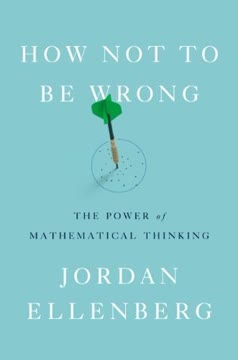
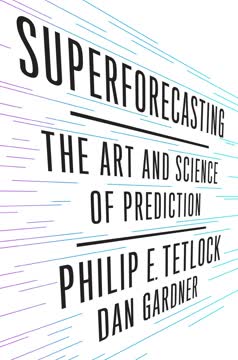
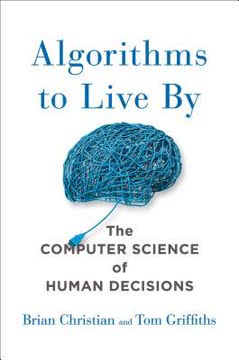
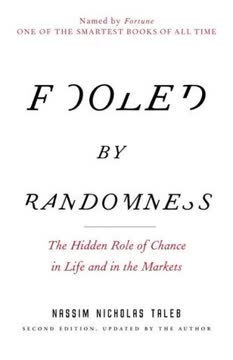



Download PDF
Download EPUB
.epub digital book format is ideal for reading ebooks on phones, tablets, and e-readers.





